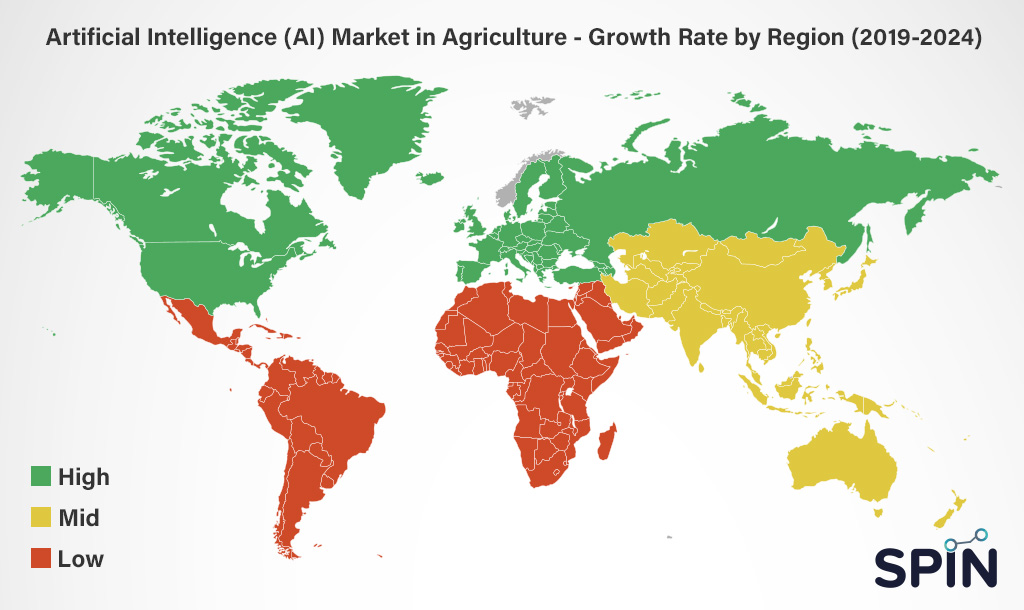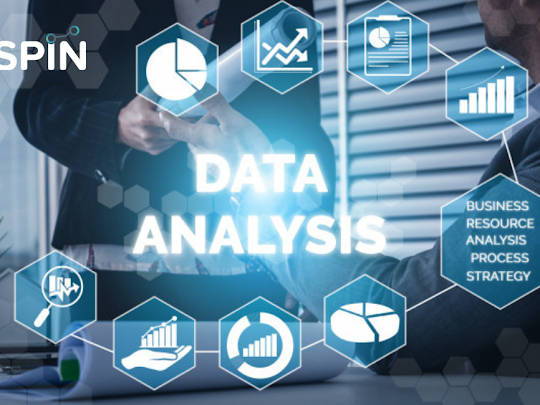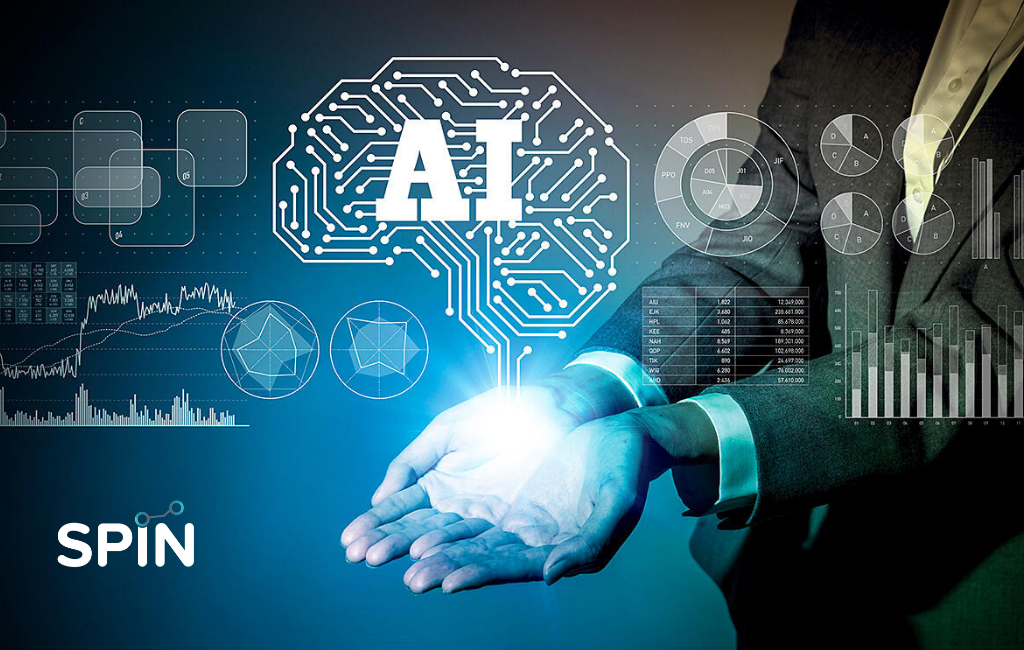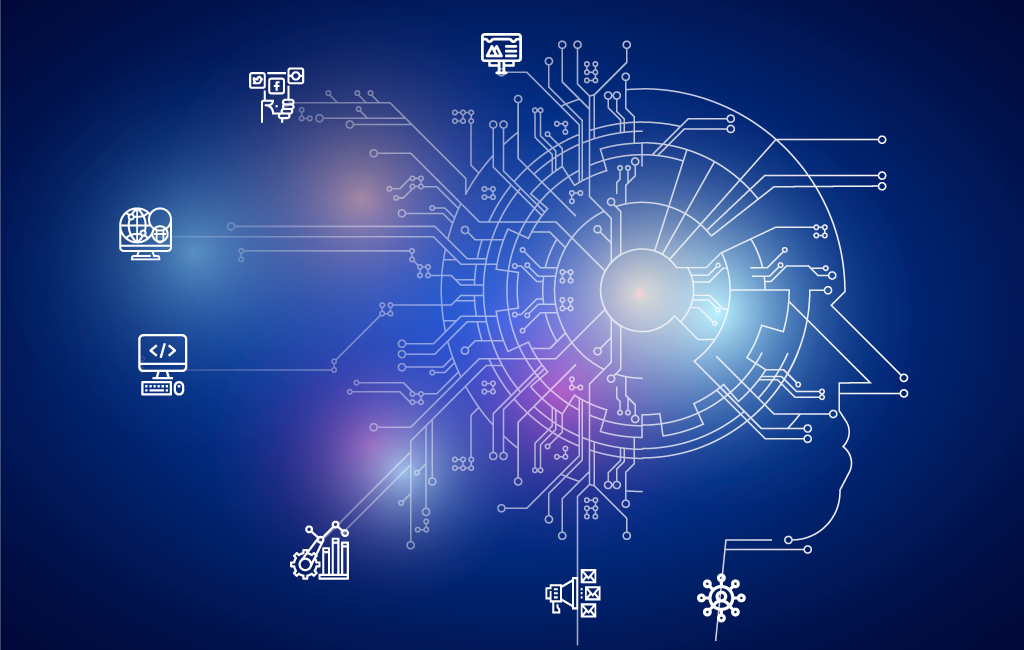In the true sense, Farming is by far one of the oldest lines of work in the world.
But, with the passage of millennia, Humanity has come a long way and so did agriculture. From conventional methods to grow crops to the usage of AI in Agriculture, Humanity has indeed taken a big leap.But with land getting in short supply and population growing by leaps and bounds, using creative methods to produce crops and boost productivity in limited space has become the need of the hour.
Change has stepped in. And this can be testified by the fact that the worldwide agriculture industry which is roughly estimated to be around $5 trillion, is stepping in the shoes of other sectors, shifting to what is known as Precision Farming.
For instance, adopting AI technologies to reap healthy crops, monitor soil, control pests, accumulate data for farmers etc. and eventually perk up a number of agriculture-related errands in the food supply chain.

Digital Agriculture: Farmers are using AI to increase crop yields
Artificial intelligence holds the promise of driving an agricultural revolution at a time when the world must produce more food using fewer resources.
Artificial Intelligence has various applications in agriculture ranging from rural automatons, facial acknowledgment, computerized water system frameworks, and driver less tractors. These applications are done in relationship with an alternate sort of sensors, GPS frameworks, radars, and other cutting edge contraptions dependent on AI.
Innovative progressions and the modernization of GPS are making ranchers and the agriculture specialist co-ops anticipate that additional upgrades will increase the profitability.Increasing adoption of the mechanical technology and IoT gadgets in agriculture is additionally assessed to drive the AI in agriculture.
Agriculture is slowly becoming digital and AI in agriculture is emerging in three major categories, (i) agricultural robotics, (ii) soil and crop monitoring, and (iii) predictive analytics.
Agricultural Robots – Companies are developing and programming autonomous robots to handle essential agricultural tasks such as harvesting crops at a higher volume and faster pace than human laborers.
Crop and Soil Monitoring – Companies are leveraging computer vision and deep-learning algorithms to process data captured by drones and/or software-based technology to monitor crop and soil health.
Predictive Analytics – Machine learning models are being developed to track and predict various environmental impacts on crop yield such as weather changes.
How Analytics and AI steps in actually
Intelligent farming practices that have eventually transformed into knowledge-based agriculture, increases production levels and product quality to significant numbers.
With trained professionals in this art, companies like SPIN Strategy extracts insights from numerous data sources that are integrated into an Advanced Big Data Framework with data analysis decision-making, and automated data recording.
Result- Customized data for better plant health.
At SPIN, with the combination of smart farming and AI, we assemble, analyze, and digitize massive amounts of data to aid farmers to optimize their production systems. And, that’s why we like to be termed as the Farmer’s Little Hand.
With the use of technology, we:
- Determine the ripeness of the crop
- Help farmers preserve water
- Customize production
Let’s dig deep to understand how ML and AI make a difference in Smart Farming using IoT.
Role of Artificial Intelligence in Agriculture
The agricultural industry is just like any other industry beginning to show interest in implementing the best-in-class technologies to save on resources and create more efficient processes. Agriculture is responsible for the survival of human beings, and the industry has made steady technological improvements in the last few years.

How SPIN’s ML and AI programs make the difference in Agriculture:
Machine Learning in Farming:
Provides faster and precise results by evaluating the Leaf Vein Morphology that has more data about the leaf properties.
Artificial Intelligence in Farming:
Uses algorithms and previous field data to determine crop performance in different environments, and builds a Probability Model to forecast the genes beneficial for the plant.
Here is a detailed overview, how SPIN’s AI programs turn the tables for agriculture:
1 . Water Management:
An AI-based application that can be connected with more successful use of irrigation systems and forecasting of daily dew point temperature, which is the base to determine any weather phenomena and analyze evaporation and transpiration.

2. Yield Prediction:
Moving beyond the traditional prediction of historical data, SPIN incorporates computer vision technologies to supply data on the go and conducts a thorough multidimensional analysis of weather, crops, economic conditions, etc. to reap the maximum benefit of the yield for farmers and the population.

3. Crop Quality:
The precise detection and categorization of the crop quality can shoot up the product price and cut down waste. Compared to human counterparts, machines avoid meaningless data to determine the quality of the crops and any possible anomalies.

4. Disease Detection:
At SPIN, we evaluate field images with Conventional Neural Networks to classify pests and diseases, track agro-technical activities, and gather data. To be more efficient, this approach needs more pesticides that lead to huge environmental expenses. ML is used as a general agriculture management to determine diseases and cut those costs.

5. Monitoring Crop’s health:
Hyper spectral imaging, together with sensing techniques and 3D laser scanning are vital to establish crop metrics across the land. SPIN crop health monitoring agent has the potential to change farmland monitoring by farmers and can significantly cut down on the effort.

How SPIN Contributes to Smart Farming
Confirmation and extensive testing of emerging AI applications in the Agriculture sector is estimated to be quite vital, since agriculture is affected by environmental factors that cannot be tamed, unlike other sectors where the risk is easy to predict.
At SPIN, we ensure a steady adoption of AI in agriculture with the help of Image Sensor Technology that helps in:
- Real-time monitoring, analysis, and control of pest & disease
- Pollination, Phrenology, Fertilization, Irrigation
- Pollination, Phrenology, Fertilization, and Agri-Technical activities
- Monitor and forecast yield performance in real-time to optimize results
- Using Support Vector Machines to predict yield and crop quality
- Using Artificial Neural Networks for crop management and weed detection
Scenario
Issue-One of our clients, a Colorado-based organization, wanted a preventive measure for defective crops, and optimize the potential for healthy crop production.
Solution– The trained AI professionals at SPIN conducted a comprehensive Soil Analysis and developed a system that will use Machine Learning to deliver clients with an idea of the soil’s strength and weakness. This way defective crop production could be prevented to a significant degree.
To conclude with
Artificial Intelligence and Farming have the potential to pave the way for an agricultural revolution, especially when the world needs more food production with limited resources.
As per the UN Food and Agriculture Organization, the population will hit the roof by 2 billion by 2050. However, experts are of the notion that only 4% of the additional land will fall under cultivation category. In tune with this, the use of the latest technology to do smart farming still takes the front seat.
AI-Powered solution will enable farmers to do more with limited resources and produce the finest quality of crops that amazes even the producer.
Need professional guidance to reap the benefits of using AI in farming? Visit SPIN Strategy today: https://www.spinanalyticsandstrategy.com/













